


www.cooltears.com PLUS: • Teardrop Electrical: Determining Your Power Needs • Cool Tears hosted west Michigan crawl! Visit Sleeping Bear Dunes National Lakeshore (shown abvoe) MAIDEN VOYAGE: ARGONAUT TEARDROP CAMPER by reader
Konrade
Ron




2 Cool Tears Magazine March/April 2023 Serious about building a teardrop camper? BIG WOODY CAMPERS 715-271-0465 | www.bigwoodycampers.com Handcrafted Custom Campers. Plans, kits, parts and accessories for the home builder! $103900 plus shipping



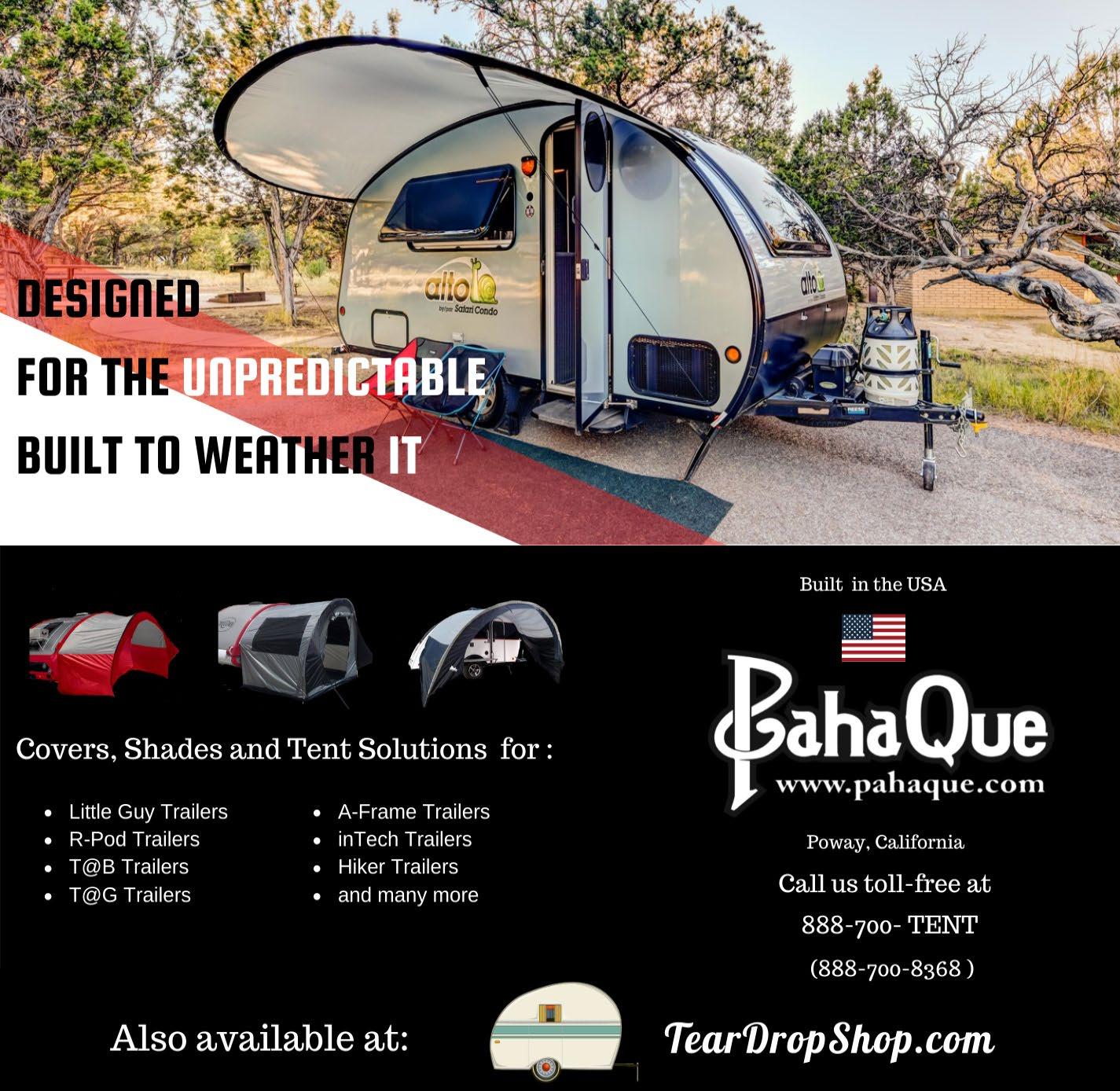
3 Cool Tears Magazine March/April 2023 The only electric brake control with nothing installed in the tow vehicle, 100% trailer contained. Period. HIT THE OPEN ROAD With Autowbrake on your trailer, just plug and tow. www.getautowbrake.com · getautowbrake.com
Editor


Lisa Adams
Contributing Authors

Anne Cox
Ron Konrade
© Copyright 2023 Cool Tears Magazine™ All Rights Reserved Cool Tears Magazine™ is a trademark. Written materials submitted to Cool Tears Magazine™ become the property of Cool Tears Magazine™ upon receipt and may not necessarily be returned. Cool Tears Magazine™ reserves the right to make any changes to materials submitted for publication that are deemed necessary for editorial purposes. The content of this publication may not be copied in any way, shape or form without the express permission of Cool Tears Magazine.™ Views expressed in the articles and reviews printed within are not necessarily the views of the editor, publisher, or employees of Cool Tears Magazine™.
Mailing Address: Cool Tears Magazine 51956 CR 215 Lawrence, MI 49064

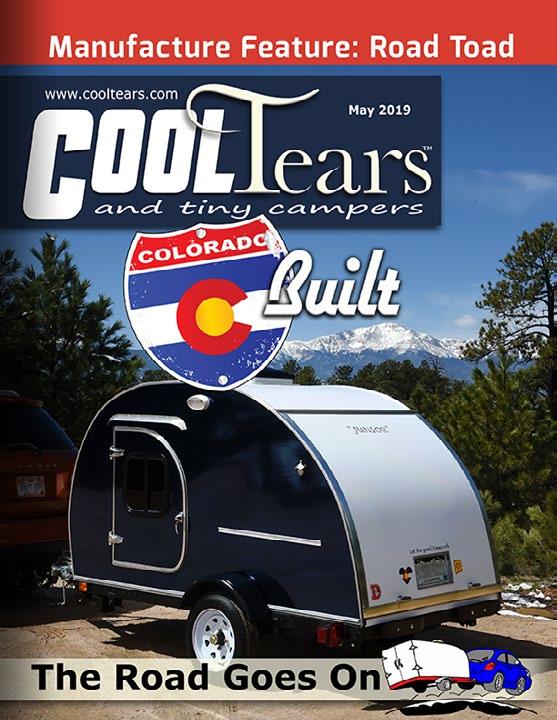


4 Cool Tears Magazine March/April 2023
KITCHEN ON WHEELS: BIG FLAVOR SANDWICHES Anne Cox 8 20 COVER STORY MAIDEN VOYAGE: ARGONAUT TEARDROP CAMPER
Konrade Vol. 11 No. 2 March/April 2023 Connect with us! LETTER FROM THE EDITOR Lisa Adams 5 A COOL TEARS CRAWL Cool Tears Staff 16 TEARDROP ELECTRICAL: DETERMINING YOUR POWER NEEDS Cool Tears Staff 11 2023 WINNING CALENDAR PHOTOS Cool Tears Staff 28 LEAVE NO TRACE: TRAVEL & CAMP ON DURABLE SURFACES Lisa Adams 34
Ron
Letter from the Editor:


Tiny Camper Enthusiasts, Spring is on the way!
Granted, as I write this letter to you, we are under a gale warning and winter weather advisory. There could be 15 foot waves on Lake Michigan and we're expected to get some snow tonight through Sunday. But honestly, it is beginning to feel like spring. The ice is long gone from the pier and railing, the days are getting longer and we’re finally starting to enjoy a little bit of sunshine as the gray, winter clouds begin to diminish in the Great Lakes region.
Winters on the east side of Lake Michigan (and each of the Great Lakes) are gray. Sunshine is a rarity in the winter months. While those gray days usually bring a ton of snow to us in the bullseye of the Lake Michigan snow belt, this winter has been surprisingly mild by our standards. While we’re still on track for a normal amount of snowfall, it hasn’t stayed on the ground for very long. We’ve had several rounds of ten to 20 inches of snow over a few days and then a week later, it’s gone. Not bad, but not ideal for winter sports this year.
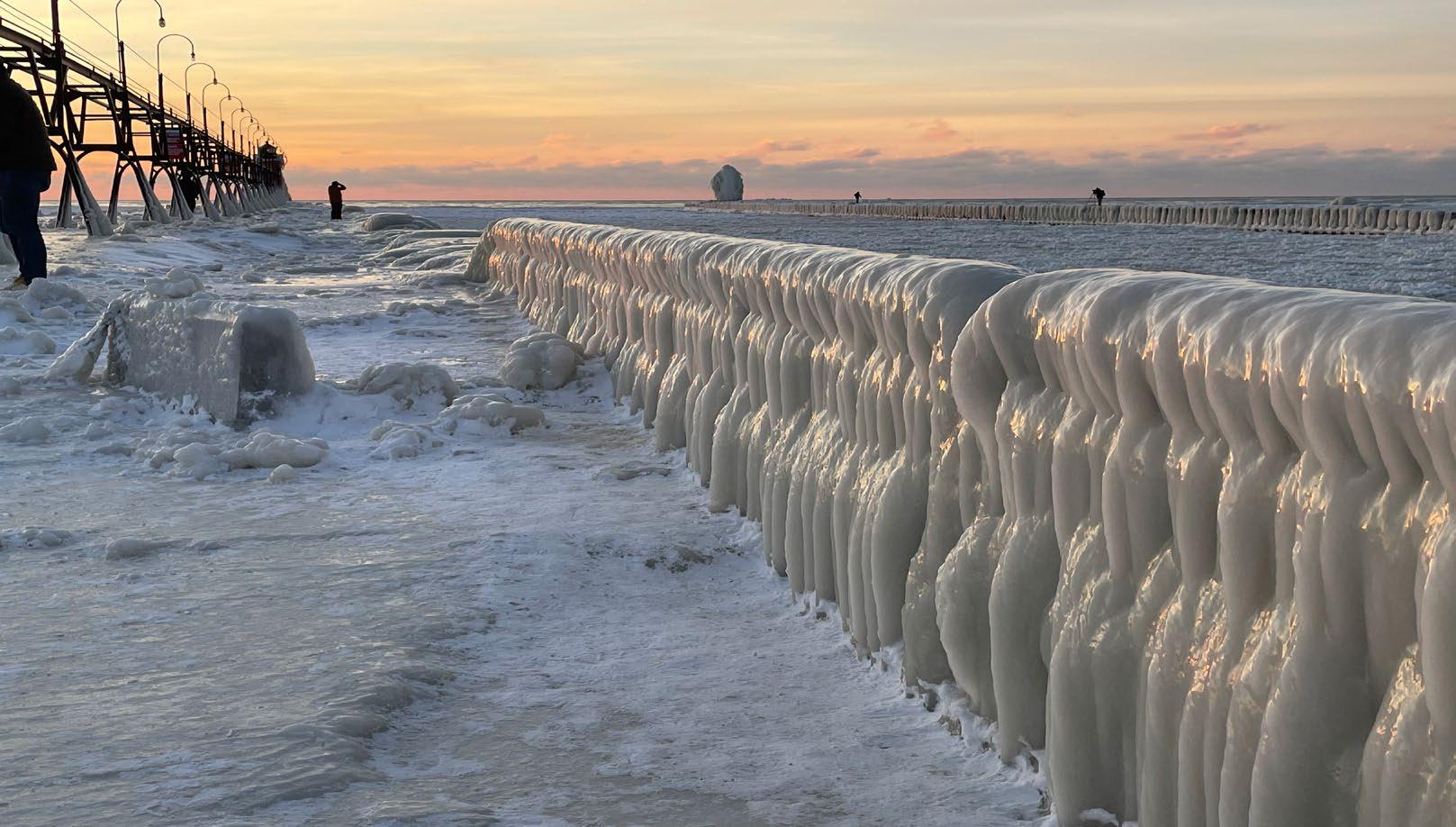
In contrast to the winter, spring and summer usher in beautiful blue skies, warm temperatures, and lighter breezes. I almost hate to spread the news, but Michigan is an incredible place to camp! We have beautiful sand dunes and white sand beaches along the eastern shore of Lake Michigan. We have incredible state and national forests to explore. There is truly something for everyone in Michigan!
This summer, Cool Tears is going to host a tiny camper crawl along (see the article beginning on page 16 for details) the western part of our state. You’ll have the chance to experience Lake Michigan and you’ll see how it impacts our environment, our growing seasons, etc. We’ll start in the southwestern part of the state and work our way towards Traverse City. It will be fruit season along the west coast of Michigan, so be sure to visit a local farm market or U-pick farm to buy blueberries, peaches, sweet corn, etc.
5 Cool Tears Magazine March/April 2023
We’re looking forward to hosting people in our neighborhood. While we won’t have specific kid activities planned, this is a family friendly event.
Please reach out with any questions. Note that the Betsie River Campground is already booking up quickly for the summer - so be sure to book this first! If there are no sites available, give them a call and ask if they can put you in a tent site instead. If you can’t find a spot here, there are other locations in the area that you can stay to explore the Sleeping Bear Dunes National Lakeshore region of our great state. Let us know and we can recommend other nearby places, if needed. n
Happy travels and stay safe
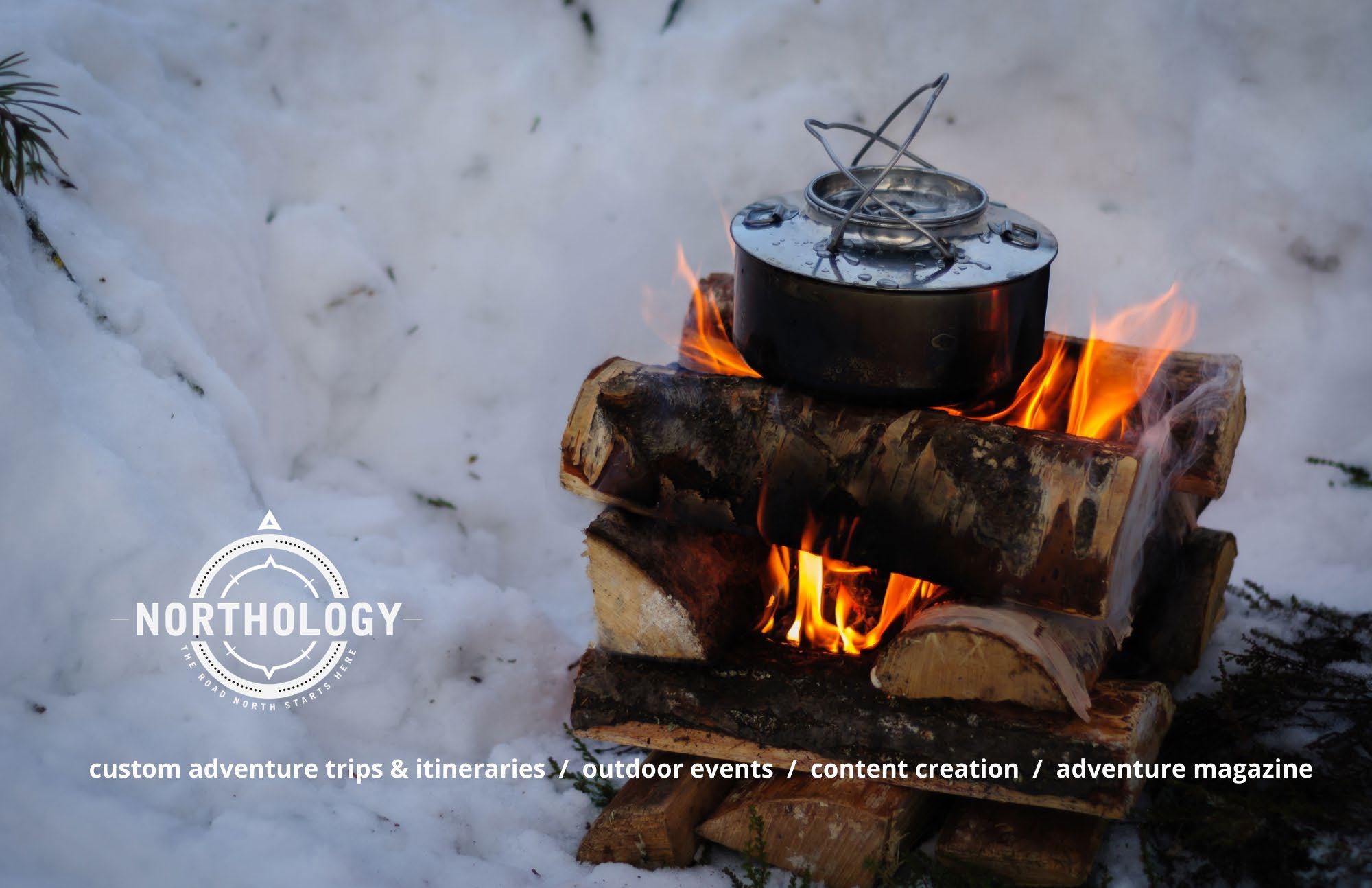
Live Tiny. Live Free.
Lisa Adams Editor Cool Tears Magazine™ Lisa@cooltears.com
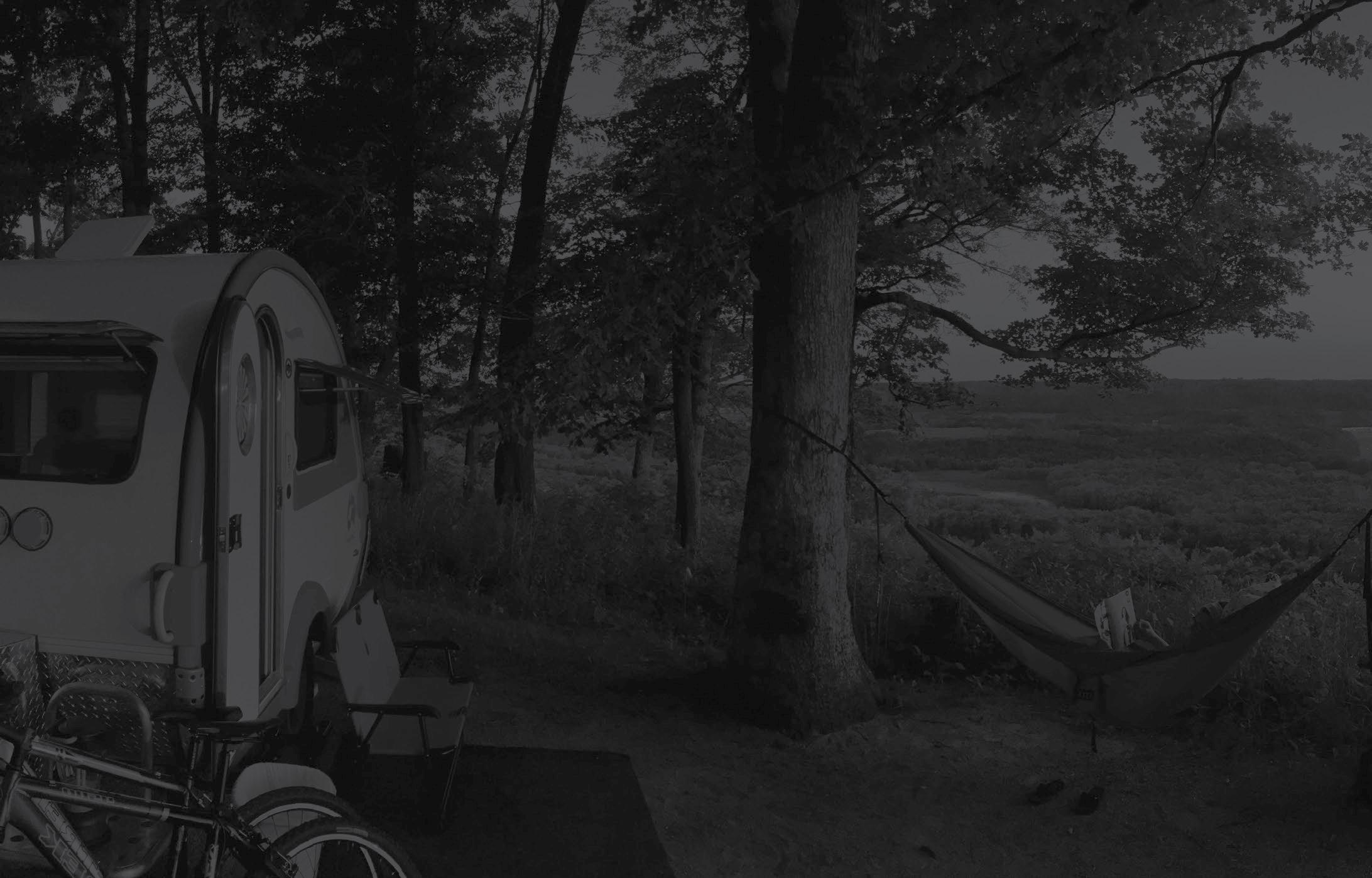




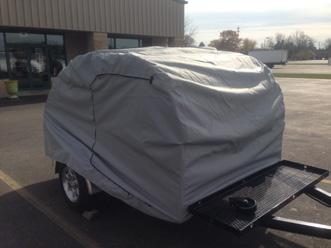


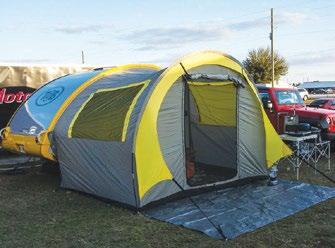


7 Cool Tears Magazine March/April 2023 Now available on iOS and Android! http://teardropnation.com Connect with the Teardrop Community! Status Updates Share Photos Likes & Comments Campsite Check-Ins Review Campgrounds Connect With Campers THE APP FOR TEARDROPPERS! Visit www.teardropshop.com or call Toll Free: 1-844-834-5701 The Best Buying Experience and the Best Accessories for your Teardrop! + Plus new arrivals, daily deals and live chat with our accessory experts! 10x10 Cottonwood Shelter Side Mount Tent 10x10 Cottonwood XLT Teardrop Lock All Weather Cover T@B Tent
KITCHEN ON WHEELS BIG FLAVOR SANDWICHES

First, a little backstory to this issue's recipe. My mom has spent the winter with us this year for the first time in her 80 years, a gift to us all and an opportunity to try new things. My mom has a sandwich every day for lunch, usually turkey, mayo and mustard on whole wheat. The rest of the family uses up leftovers or makes a salad for their lunch routine. I recently had an ankle replacement and find myself planning an upcoming camping trip with my limited mobility and stamina. I’ll need to keep it simple but as a foodie, I want flavor…big flavor and the ability for others to tone it down if they can’t handle the "heat." While pondering the menu I thought of mom’s sandwich routine and my brain started considering all the possibilities of how to elevate the modest sandwich to a meal I would consider special and delicious enough to share with you and others at our campout.. I dug out my Nancy Silverton sandwich book for inspiration and put together the following menu for our April trip. Let us know if you have any delicious sandwich traditions.
The beauty of these two recipes is that you can serve cold or grill, add or delete, use your favorite bread. If you're feeling adventurous, use your pie iron over the fire to make the apple grilled cheese!
Apple Grilled Cheese:
• bread of choice - anything goes, try a crusty Italian or sourdough
• apple - thinnly sliced, peeled if the skin seems tough or is waxy
• cheese - favorites are sharp cheddar, smoked gouda or brie
• butter
Additional or optional ingredients: a thin layer of mashed sweet potatoes, apple butter, or bacon or sliced ham.
Instructions:
Heat skillet over medium heat while buttering your bread. Assemble your grilled cheese (buttered sides facing out) by layering cheese and apples between the bread. Place in a skillet and press down. Cook for 3-4 minutes on the first side, flip and cook for about 3 minutes on the other side, allowing the bread to brown, but not burn.
Loaded Baguette:
• baguette
• greens - spinach, arugula, romaine or a mix
• eggs - hardboiled and sliced
• tuna - drained, optional
8 Cool Tears Magazine March/April 2023
• veggies - whatever you like here. We suggest cucumbers, tomatoes, peppers, shredded carrot, onion, etc

• Bagna Couda
Bagna Couda
• 5 garlic cloves - peeled and finely chopped
• 12 anchoives, rinsed
• 1 stick of butter, unsalted
• 1/2 cup of olive oil
• 1 tsp lemon zest - optional
• 3 - 4 tsp lemon juice - optional
• salt and pepper to taste
Bagna Couda Directions:
Place a pan or skillet on low heat and add oil, garlic, and anchoives. Heat until the garlic is fragrant and soft. Stir in the butter until melted then add lemon, seasoning and remove from heat. Add zest and stir to incorporate.
Slice bread lengthwise and spread a little bagna couda on each side. Layer veggies on each side and place eggs on one side. Drizzle bagna couda over eggs and add tuna if you're using. Bring the sides together and slice into servings pieces. Individually wrap for picnics.

Mix it up:
Vegans can replace the anchoives with smashed kalamatas or miso paste. This is essentially a nicoise salad on bread and you can use different dressings to flavor as you like.
I like to prep my veggies and sauces before traveling.
Let us know what you think and if you have any ides for us to try! Reach out to Anne@cooltears. com
9 Cool Tears Magazine March/April 2023


10 Cool Tears Magazine March/April 2023
Teardrop Electrical: Determining Your Power Needs
 By COOL TEARS STAFF
By COOL TEARS STAFF
Addingan electrical system to a teardrop camper can seem daunting, but it can be a relatively simple DIY project with the proper knowledge and tools. Determining your power needs is the first crucial step in designing a DIY teardrop or squaredrop camper's electrical system. This article provides a high-level overview of equipping your teardrop or squaredrop with electricity and seven ways to determine your power needs. For this article, we assume you will have a battery in your DIY teardrop or squaredrop camper.
11 Cool Tears Magazine March/April 2023
In the next issue, we will highlight how to wire your teardrop or squaredrop camper to be used solely with shore power, with no battery.
How to add electricity to a camper - Overview
Here are the basic, high-level steps to follow on how to add an electrical system to a teardrop camper; this includes how to charge the battery with solar panels:
1. Determine your power needs: The first step is determining how much power you need for your teardrop camper. Start by listing all the appliances and electronics you plan to use while camping and how much power they consume. This list will help you decide how big of a battery and solar panel system you need. We will dig into this later.
2. Choose a battery: You'll need a deep-cycle battery to power your teardrop camper's electrical system. The most common types of deep-cycle batteries are leadacid and lithium-ion. Lithium-ion batteries are more expensive but last longer and have a higher energy density. Lead-acid batteries are cheaper but require more maintenance.
3. Choose a solar panel and charge controller: Solar panels are an excellent way to charge your teardrop camper's battery, especially if you plan to camp off-grid. You'll need to choose a solar panel that can produce enough power to recharge your battery. The solar panel size will depend on your power needs and the amount of sunlight you expect to receive. The charge controller will be sized to work with your battery and electrical system. In our next issue, we'll discuss the pros and cons of the different types of solar panels
and charge controllers on the market.
4. Install the battery: Once you have chosen a battery, you'll need positive and negative terminals to your camper's electrical system, which will come from your fuse box.
5. Install the solar panel: You'll need to run wires from the solar panel to your battery, using a charge controller to regulate the voltage and prevent overcharging.

6. Connect your lights, outlets, appliances, etc.: After installing your battery and solar panel system, you'll need to connect your lights, outlets, appliances, and electronics to your teardrop camper's electrical system. You do this by running wires from the battery to a fuse panel and from the
fuse panel to each appliance. We'll cover this in a future issue.
7. Test your system: Once everything is connected, it's time to test your teardrop camper's electrical system. Ensure everything is working properly and your battery is charging when exposed to sunlight.
12 Cool Tears Magazine March/April 2023
While simplified, that's it! With these steps, you should be able to add an electrical system to your teardrop camper and charge the battery with solar panels. Always take safety precautions and consult an expert if unsure about any part of the installation process. This is just a general guide on what to consider if adding electric to your tiny camper.
Determine Your Power Needs
Determining your power needs is essential to properly size and design your DIY teardrop or squaredrop camper's electrical system. Before jumping to number one below, it's imperative that you know where and how you intend to use your tiny camper. Do you intend to camp where there is access to electricity, or would you rather boondock (also called dry camping or off-grid camping)? For example, if you always intend to camp where you can plug into electricity, then you may not want to install a battery or use solar panels. However, it is important to note that campground electrical systems can have issues, and you may have unwittingly booked a site with no working electricity. Last fall, while camping for a night at Palo Duro Canyon State Park in Texas, we were counting on having electricity to top up our battery before boondocking for another four or five nights. We plugged in, flipped the breaker, and nothing happened. The power pole at our campsite was not working! An easy Plan B in this scenario is to carry a longer extension cord. If you ask nicely, your campsite neighbors will likely let you plug into their power pole.
Seven ways to determine your power needs:
1. Make a list of all the appliances and electronics you plan to use while camping, including lights, fans, TV, fridge, phone charger, and any other devices you plan to use. Identify which items will plug into a USB outlet or 12-volt socket.Identify which items will need to plug into a 110-volt (household outlet). This will require extra equipment (an inverter) if you intend to run your power from a battery.
2. Estimate the power consumption of each item on your list. You can typically find this information on the product's label or manual. The unit of power consumption is Watts (W).
3. Determine how long you plan to use each appliance or device per day. For example, you may plan to use your lights for 4 hours, your fan for 8 hours, and your fridge for 24 hours.
4. Calculate the total power consumption per day by multiplying the power consumption of each item by the hours of use per day. For example, if your lights consume 10 watts and you plan to use them for 4 hours, then the power consumption for lights is 10 watts x 4 hours = 40 watt-hours (Wh). Do the same calculation for all items on your list and add the results.
5. Add a safety factor to your power consumption calculation. Adding 10-20% to your total power consumption is a good idea to ensure enough power for unexpected situations, like cloudy days or equipment failures. If you want to plug items into a 110-volt outlet while using a battery, add 25% - 30% to your total power consumption instead to account for the energy loss due to conversion process efficiencies.
6. Use the total power consumption
13 Cool Tears Magazine March/April 2023
calculation to determine the battery capacity you need. The unit of battery capacity is Ampere-hours (Ah). You can find the battery capacity by dividing the daily power consumption by the battery voltage. For example, if your total power consumption per day is 100 Wh and your battery voltage is 12V, then the battery capacity you need is 100Wh/12v = 8.33 Ah.
7. Use the battery capacity and your expected daily solar panel input to determine the size of your solar panel. Generally, a 100W solar panel can recharge a 100Ah battery in about 5-6 hours of good sunlight.
Following these steps, you can accurately size and design your teardrop or squaredrop camper's electrical system to meet your power needs.
Stay tuned to future issues where we will continue to cover different electrical-based topics. For example, in the May/June issue, we will review how to wire your teardrop or squaredrop camper to only work with shore power, and in the July/August issue, we will cover the types of solar panels and charge controllers and the pros and cons of each. g

2023 Calendars are still available for purchase! Order yours today and show your love of tiny campers in your office, on your fridge, or on your wall.
Click the image to the right to order.
14 Cool Tears Magazine March/April 2023
Merchandise available from Bonfire
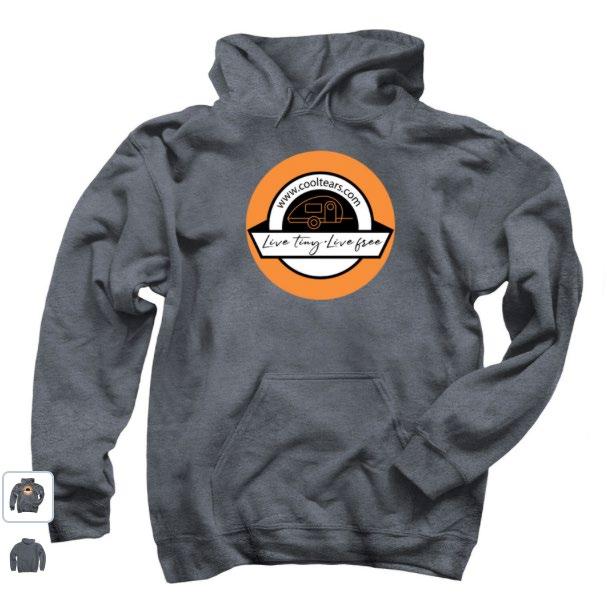
NOTE: One of the great things about having a digital magazine is the ability to link you directly to the products or services that you want to hear more about. Some of the links on our website or in the magazine are affiliate links where we earn a small commission on goods that you purchase. These commissions help us to continue to defray the costs of publishing this magazine. You may notice as you read through the magazine that if you put your mouse over any ad or hyperlink, the screen may flash briefly. You can click on that picture or hyperlink and it will take you directly to more information. We are not affiliates for everything that we link to.
Cool Tears also participates in the Amazon Services LLC Associates Program, an affiliate program designed to help small businesses like this to earn a small fee by linking products to Amazon that you may be interested in.

We appreciate your support. If you have any questions, don't hesitate to contact either of us at Lisa@ cooltears.com or Anne@cooltears.com
Harvest Hosts is a membership program that provides access to a network of wineries, farms, breweries, museums and other unique attractions that invite RVers to visit and stay overnight. Harvest Hosts now allows clamshell and teardrop trailers, but you may NOT use your outdoor cooking facility. Click the logo below to get 15% off the regular yearly price. We've stayed at breweries, wineries, farms, and art studios in our local area as well as across the country.

15 Cool Tears Magazine March/April 2023
A Cool Tears Crawl
By COOL TEARS STAFF
C ool Tears and Tiny Campers is hosting its first-ever tiny camper camping crawl along the beautiful west coast of lower Michigan!

16 Cool Tears Magazine March/April
2023
What is a crawl?
A crawl denotes that we are not planning to camp in just one location. Instead, we plan to travel slowly from the southwest corner of Michigan to the Leelanau Peninsula over several days. We will not caravan between sites, so you are free to explore the area alone or with some of the others in the group. Weather permitting, we will have cornhole boards set up each evening for anyone who wants to play. We'll also make sure there are several decks of cards for card games. Each night, there will also be a communal campfire.
About the crawl
We will cover 238 miles (383 km) from Van Buren State Park to Traverse City State Park, with additional overnights in federal and private campgrounds. Each camper will need to reserve their campsites at each location. Cool Tears will not be handling the reservations for this trip. A $30 fee for each trailer (not person) will help defray the costs of firewood, happy hour snacks, games, etc, payable to Cool Tears Magazine.
We will begin at Van Buren State Park on Sunday, August 6th, 2023. This park is just a few miles from the city of South Haven, and it has a mile-long sandy beach and woodland trails. This campground has electric and modern restrooms. As a reminder, this crawl is focused more on evening gatherings, and you are free to explore as you wish during the day. The city of South Haven is accessible by bike or foot via a 4-mile paved trail. If you're up for a more extended biking adventure, this trail connects to the Van Buren Trail State Park to add 12 miles (each way). The Kal-Haven Trail also connects in
South Haven, and it is a 33+ mile trip (each way) to Kalamazoo via an old railroad track that's been converted to a crushed limestone trail. There are several museums in South Haven to explore, including the Michigan Maritime Museum, the Liberty Hyde Bailey Museum, and the Flywheeler Museum. There are wineries, breweries, and art galleries, all within a short drive. Early August is also a great time of year to visit the local fruit orchards and pick some blueberries. Did you know that Michigan grows nearly 100 million pounds of blueberries? Van Buren county (our home county) is the nation's largest grower of highbush blueberries.
Monday, we will have our longest travel day at 145 miles (233 km), and we will stay in the Lake Michigan Recreation Area between
Manistee and Ludington that night. Lake Michigan borders this campground to the west and the Nordhouse Dunes Wilderness Area to the south. Nordhouse Dunes is one of two federally Designated Wilderness Areas in Michigan's lower peninsula. The dunes in
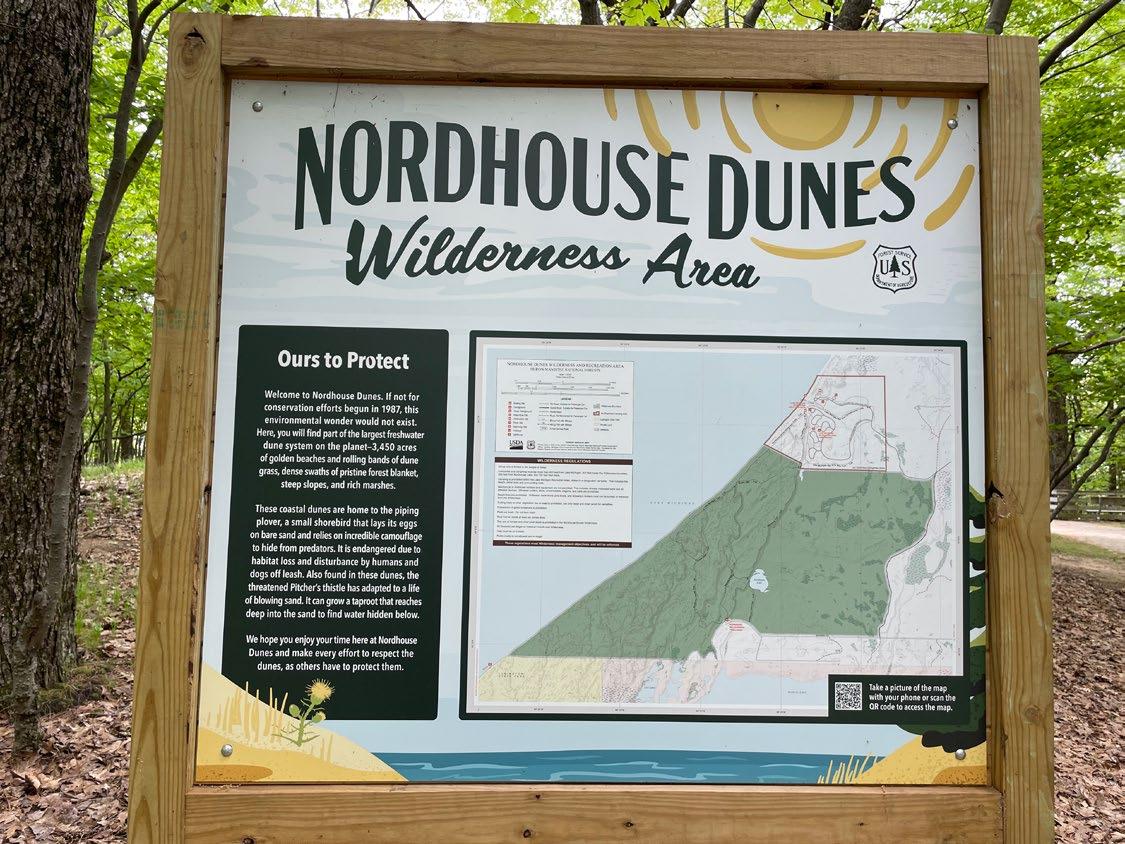
17 Cool Tears Magazine March/April 2023
this area were formed over 3000 years ago, and the site also contains the most extensive freshwater interdunal ponds in the world. There are many trails to hike or bike in this area. So kick back and relax in one of the most beautiful areas of the lower peninsula. There is no electricity or modern restrooms at this campground.
On Tuesday, August 8th, we will travel 51 miles (82 km) to the Betsie River Campsite, a private campground in Frankfort. We will stay here for two nights because there is much to see and do in this area. Unfortunately, the name can be deceptive; no waterfront sites exist on the Betsie River. If you'd like to go fishing, though, this is the place to be, as this is salmon, perch, bass, trout, and steelhead area. There are charters available in town, or you can bring your waders and fish a few miles away on the Betsie River or travel less than 15 miles to the Platte River. The campground has a fish cleaning station if you're lucky enough to haul in the big one! The campground rents bikes if you don't bring yours, and just outside the entrance is the Betsie Valley Trail. The campground sits less than 3 miles from Lake Michigan and about 7 miles from the clear blue water of Crystal Lake. The campground has a small camp shop in the main building and a tiny cafe if you don't want to make breakfast. Last summer, we bought a quart of milk (in a returnable glass bottle) from a local dairy.
This campground is the perfect jumpingoff point to explore the southern areas of Sleeping Bear Dunes National Lakeshore. There are miles of hiking trails, or you can rent a kayak, canoe, paddleboard, or tube and enjoy a paddle on the Platte River.
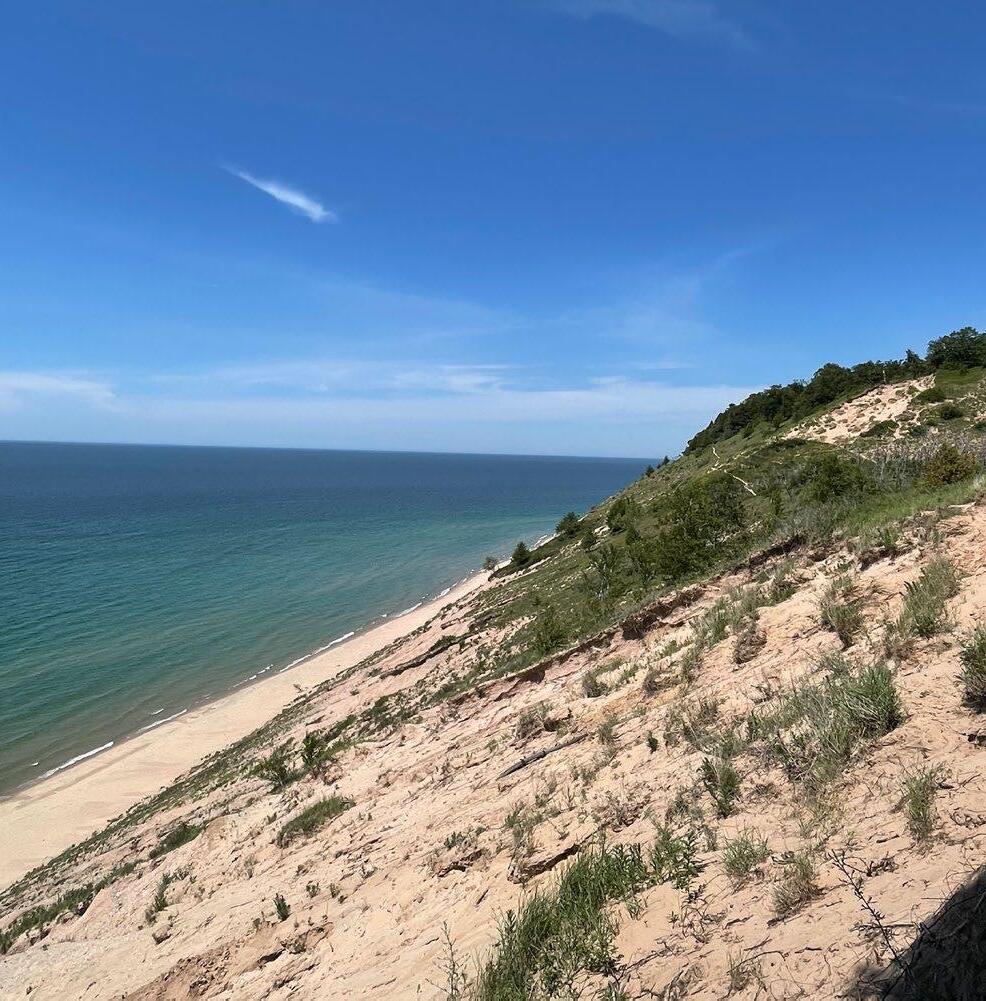
The Lower Platte River is within Sleeping Bear Dunes, and the water should be shallow, clear, and warm (by upper Michigan standards). If faster water is more your speed, try the Upper Platte River. The river is still shallow but has cooler spring-fed water, and the local livery does say that 50% of the canoes flip, so be prepared to get wet. They do say that kayaks are easier to navigate the Upper Platte.
On Wednesday evening, we will gather for a group potluck for dinner.
RESERVATIONS FOR BETSIE RIVER ARE OPEN NOW! THIS CAMPGROUND WILL FILL UP QUICKLY, SO MAKE YOUR RESERVATIONS NOW - AS OF THE WRITING OF THIS ARTICLE, THERE ARE ONLY 15 SITES AVAILABLE - SO BOOK THIS FIRST!!
Thursday morning, August 10th, we'll travel east less than 25 miles (43 km) to Interlochen State Park. We are staying in the rustic south
18 Cool Tears Magazine March/April 2023
loop along the shore of Green Lake (site 720), but please book what site appeals to you. Interlochen State Park was Michigan's first officially recognized state park, created in 1917. In 1928, Interlochen Center for the Arts, a national music camp, was established on the property north of the park boundary. If you enjoy music, the band Train is playing at the Center for the Arts. Tickets are not on sale yet. If Train doesn't interest you but seeing a different live show sounds appealing, check out the Center for the Arts. Other musicals, plays, art exhibits, etc., might be added to their schedule as the year progresses. Interlochen State Park is located on two swimming and fishing lakes: Duck Lake and Green Lake. Try your luck at fishing or go paddling on the lakes. There is a paddle craft rental shop in the area.
Friday morning, August 11th, we will travel just under 20 miles (32 km) to stay at Traverse City State Park for 1 - 2 nights. We are only booked for one night, but please spend a second night in the city if your schedule permits. Traverse City is the "Cherry Capital of the World," as it is one of the largest producers of tart cherries. Unfortunately, this trip is about one month after peak cherry season. Traverse City is located at the bottom of the Grand Traverse Bay of Lake Michigan. And that bay is divided into two sections by the 17-mile (27 km) long Old Mission Peninsula. It is worth a drive to the end of the peninsula and back: the views are stunning, and you can't go wrong with any of the breweries, wineries, or general stores you stop at along the way.
The state park is located across the street from the eastern section of the bay. Traverse City is a great place to visit if you're a beer

or wine drinker. There are nearly 40 wineries and more than 12 breweries in the area. There is even a pedal and paddle pub crawl for those interested. The Village at Grand Traverse Commons is a destination to explore. The Commons was formerly the Traverse City State Hospital grounds, and you can take tours to learn more about the history or walk through the grounds to explore the nearly 500 acres of land within the city limits. The Commons is now home to unique shops, wineries, breweries, and world-class restaurants.
All of the campgrounds are open for reservations now. However, as mentioned before, I recommend booking Betsie River first, as it is a small, private campground that will fill up quickly.
I hope to see you at our first teardrop crawl hosted by Cool Tears. Please get in touch with
Anne@cooltears.com with any questions. g
19 Cool Tears Magazine March/April 2023
Maiden voyage:
Argonaut Teardrop Camper
By RON KONRADE
Editor's note: Ron shared an article with us in our last issue and he graciously has provided another for our readers! Enjoy!
InSeptember of 2022, I loaded up my custom built teardrop camper and headed to Idaho for the annual elk hunk, which was a great two week opporunity to test the design and engineering of the trailer.

20 Cool Tears Magazine
March/April 2023
The teardrop was ready for the 1300 mile (2092 km) drive across a variety of roads and terrain to my Idaho destination. The Timbren suspension was excellent at high speed and especially on rough ground. The 4” lift and 12” electric brakes proved to be an asset in certain difficult conditions. The trailer was pulled up to 85 miles per hour (137 kph) across the State of Wyoming with no issues.

The mountain roads to the basecamp were rough and muddy because of recent rains. The trailer handled the rough conditions with ease. Going off-road made me appreciate the camper’s high ground clearance.


The first night of the trip I stopped and camped on BLM land just west of Cheyenne, Wyoming. I ventured to the top of a mountain and found the perfect viewpoint. The air was cold and headed toward freezing temperatures. It was now time to test the Dometic propane furnace, set the thermostat, and go to bed. The small, well insulated cabin was easy to heat, helping the efficiency of the system. It didn’t seem to come on much to maintain a temperature, which varied approximately 3°F.
Setting up camp was quick and easy. Leveling the trailer took seconds with the aid of the built in heavy duty stabilizing jacks. The patio umbrella kept the door to the cab protected and proved to be a vital piece of equipment. The canopy and shower tent were then set up along with the solar panels. A Camplux propane tankless hot water unit
21 Cool Tears Magazine March/April 2023
is a game changer when you’re camping in remote areas. The creek provided endless water for my showers.
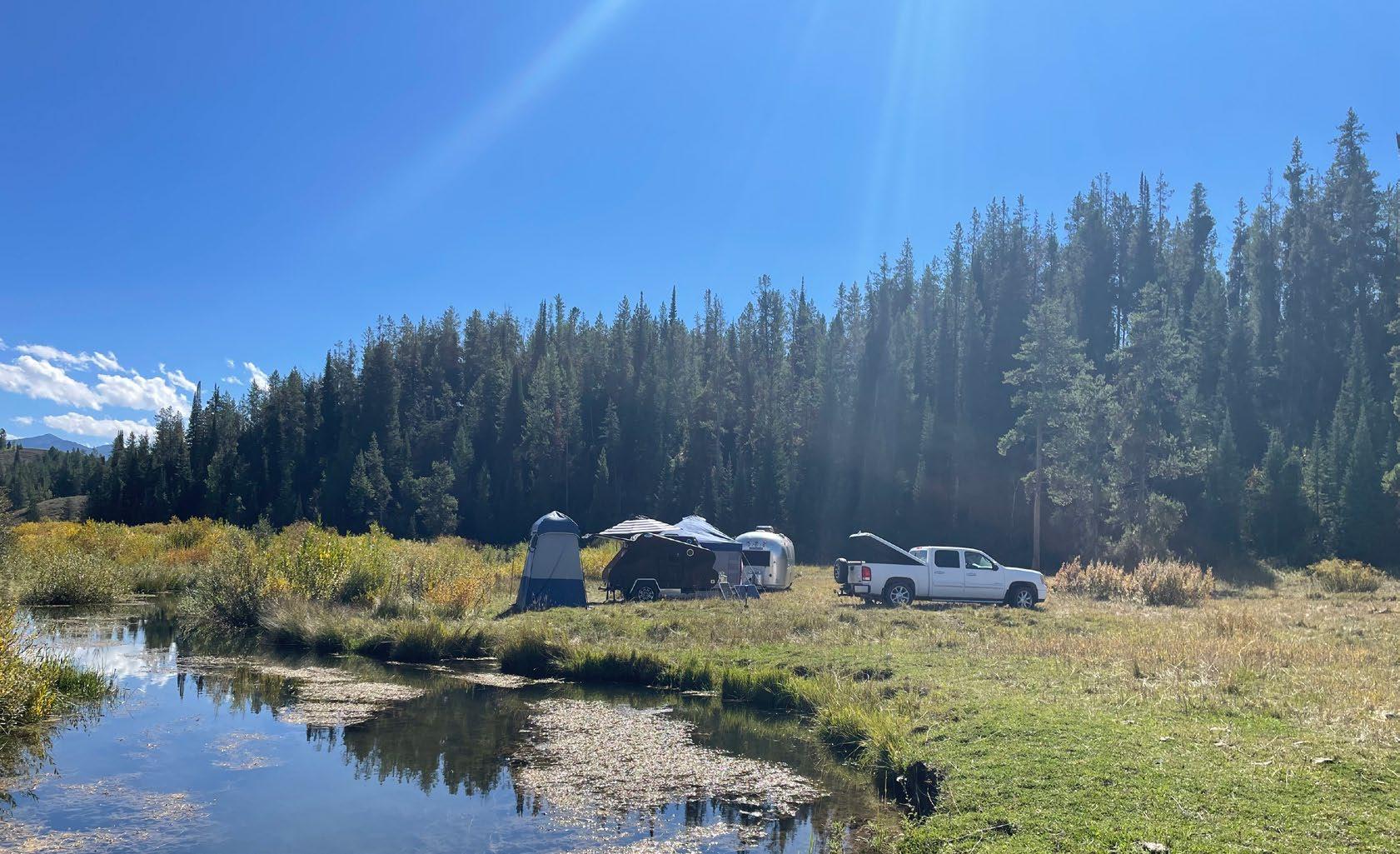
clothing and blankets. I was able to watch a movie on a couple of stormy nights that sent me inside earlier than planned, thanks to the integrated media console. The interior of the camper has several 12 volt power outlets & USB ports that kept my iPhone & iPad/Electronics charged. Two 90 amp marine grade batteries wired in parallel, create a 12V, 180 Amp system.
The galley kitchen worked out great. The integration of the sink /stove top made cleaning up much faster and easier. The glass lid over each unit helped improve countertop space and management. The water pressure at the faucet was more than adequate, as was the LED lighting for nighttime cooking. Sleeping in the teardrop was very comfortable. The ability to control the interior cab temperature with either the exhaust fan or the propane furnace guarantee a good nights rest. I enjoyed the queen size, 6” thick memory foam mattress.
There is plenty of storage for
Supplying energy to the dual marine batteries are two 100 watt solar panels. The panels are storable and have 30’ of cable, which is advantageous because you can then move them within a 30’ radius of

22 Cool Tears Magazine March/April 2023
the camper.

There is a weatherproof exterior MC4 plugin for quick setup and connection of the solar panels. This configuration provided sufficient energy to keep the batteries charged, even when under continuous load from the TV, Heater, Lights, iPhones charging, etc..
The teardrop camper really met my expectations of an off-grid, self contained unit. The solar charging system performed great, under a variety of sunlight conditions. The furnace & stove used less than half a tank of propane over two weeks of use. The fresh water tank was just enough ( 15 gallon) over the same time period. The camper was tested with everything Mother Nature threw at it, including a serious hail storm. Waterproof, dry, and correctly weatherstripped always pays off. The camper is rock solid, tried and tested. g

23 Cool Tears Magazine March/April 2023
Idaho basecamp view

Profile:
Ron Konrade
Retired Owner /operator Konrade Construction established in 1989
Licensed general contractor
The outdoors has always been a major part of my life. My Father was an avid outdoorsman that enjoyed hunting, fishing, camping, and boating. My brothers and I all grew up with a shotgun in one hand and a fishing pole in the other. Totally indoctrinated and loving it. Let’s go camping!
Ron and wife Rene live in Topeka, Kansas.
24 Cool Tears Magazine
March/April 2023
I ABSOLUTELY LOVE THIS
TRAILER!






















NATHAN GRACE ‘GLAMPING’ OVERLAND STYLE






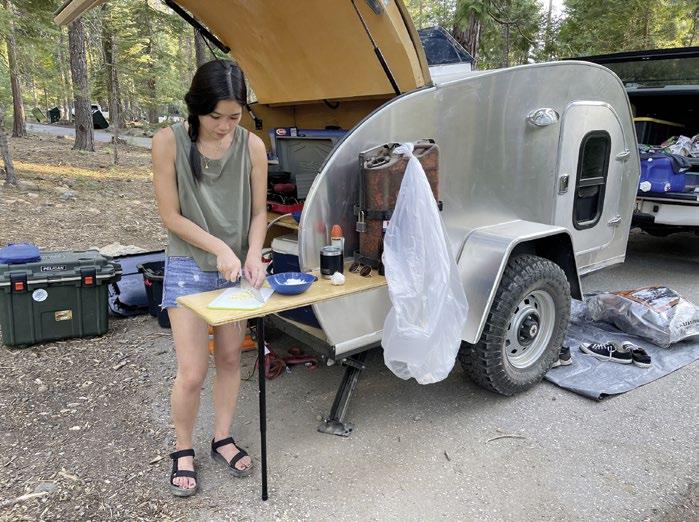


“I absolutely love this trailer, Nathan did such an amazing job delivering exactly what I asked for. He was really responsive and kind, and I left really happy with the work.”


“Nathan at second wind trailers was a dream to work with! From the second I inquired about getting a freedom trailer made by him, he was very informative and friendly. He kept me in the loop every step of the way by sending pictures and videos of the build. It was such a cool experience seeing it being built from the ground up”

25 Cool Tears Magazine March/April 2023 TWO UNIQUE FORMULAS www.SecondWindTrailers.com DESIGN • BUILD • EXPLORE
FREEDOM The FOLLOW US ONLINE: CHECK OUT MORE ON OUR WEBSITE: SCAN THIS TO SEE MORE
KORI SPECIAL EDITION! CUSTOMIZE YOUR FREEDOM Every Single Trailer We Build Is A Work Of Art!







26 Cool Tears Magazine March/April 2023 OK SCHOONERS



2023 CALENDAR WINNING PHOTOS
 By COOL TEARS STAFF
By COOL TEARS STAFF
Hereis a compilation of the 2023 winning calendar photos. There are some calendars left and the price is now reduced to $10 USD for what is remaining. Click the bottom photo on page 33 to go directly to the website to purchase yours!
28 Cool Tears Magazine
March/April 2023
Opposite page: Photo by Siegred Agena, White Sands National Park, New Mexico
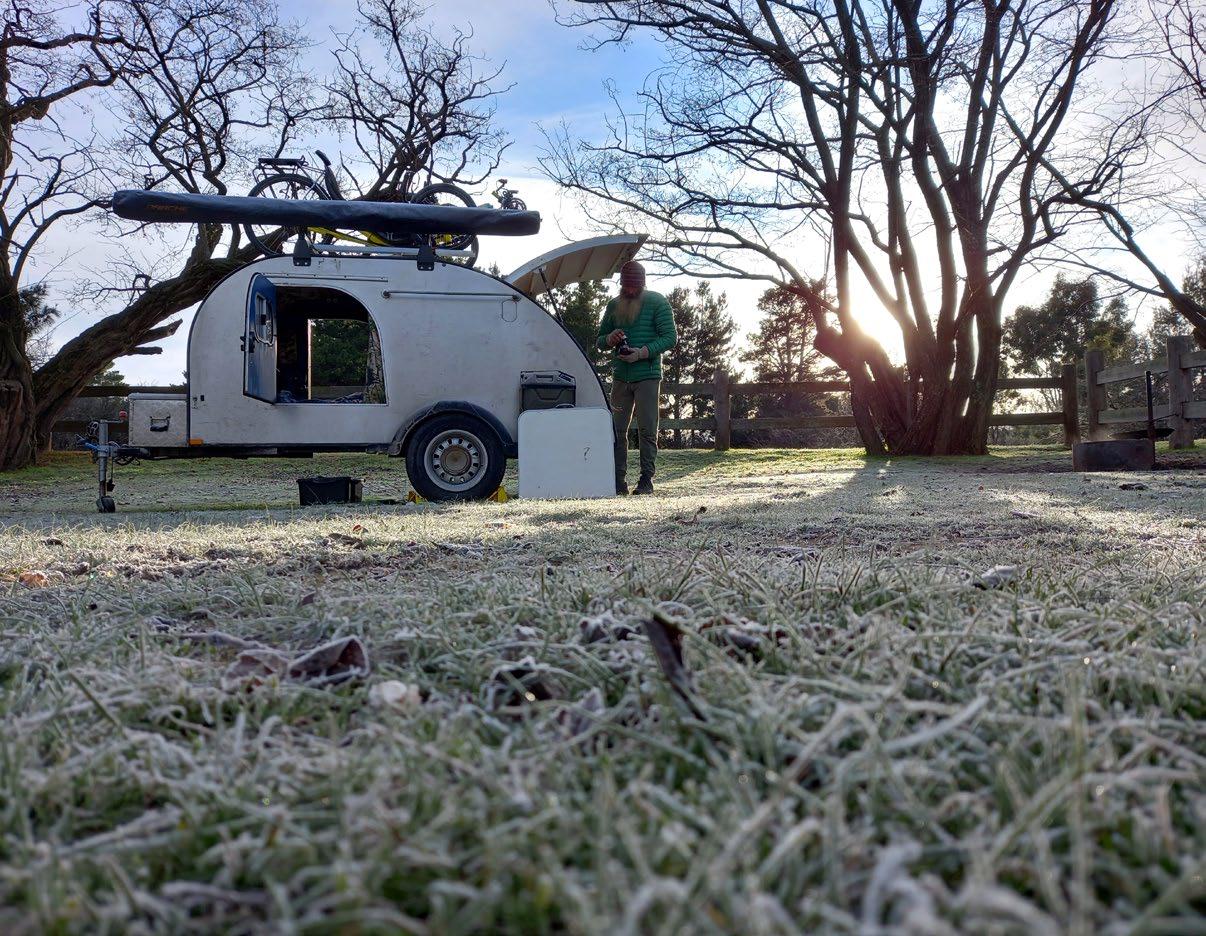
Top: by Tim Novak, Manning Park, British Columbia, Canada

Middle: by Mikola Lee, New South Wales, Australia
Bottom: by Doreen Brannan, Hiawassee, Georgia

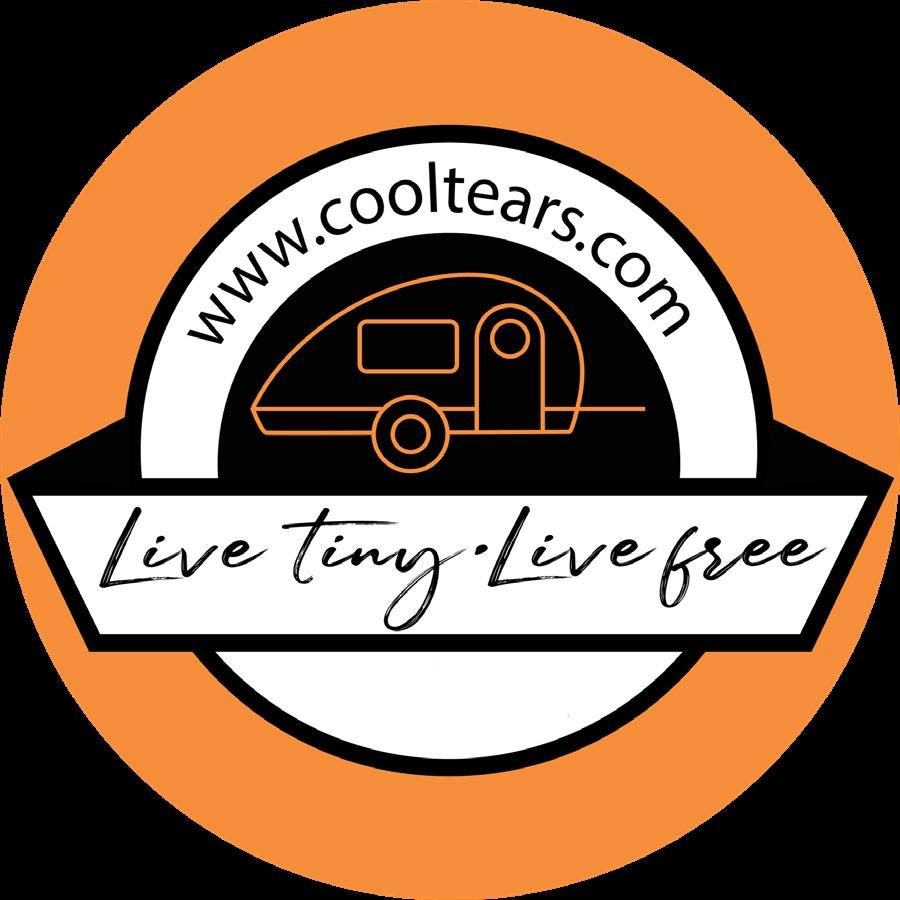
29 Cool Tears Magazine March/April 2023

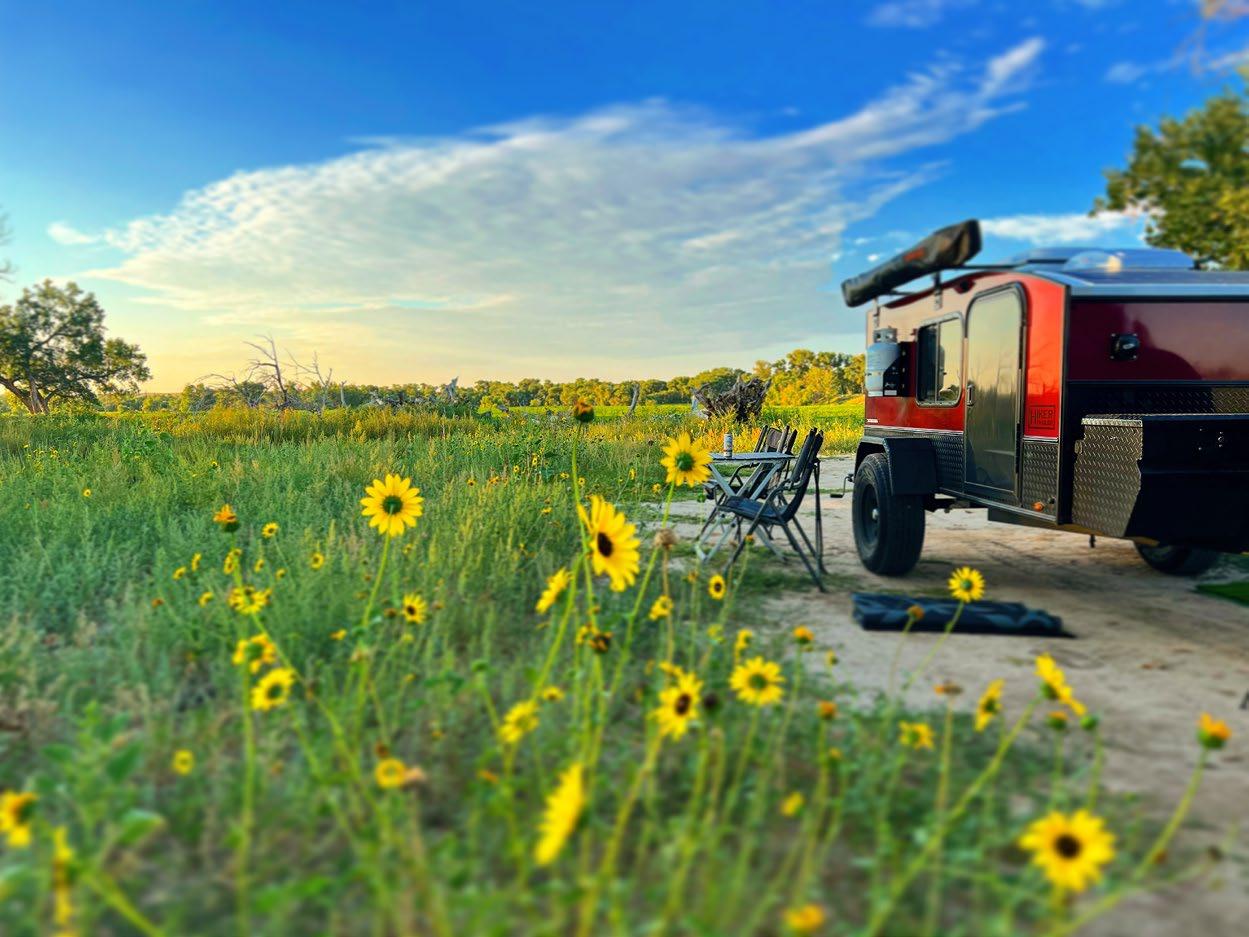
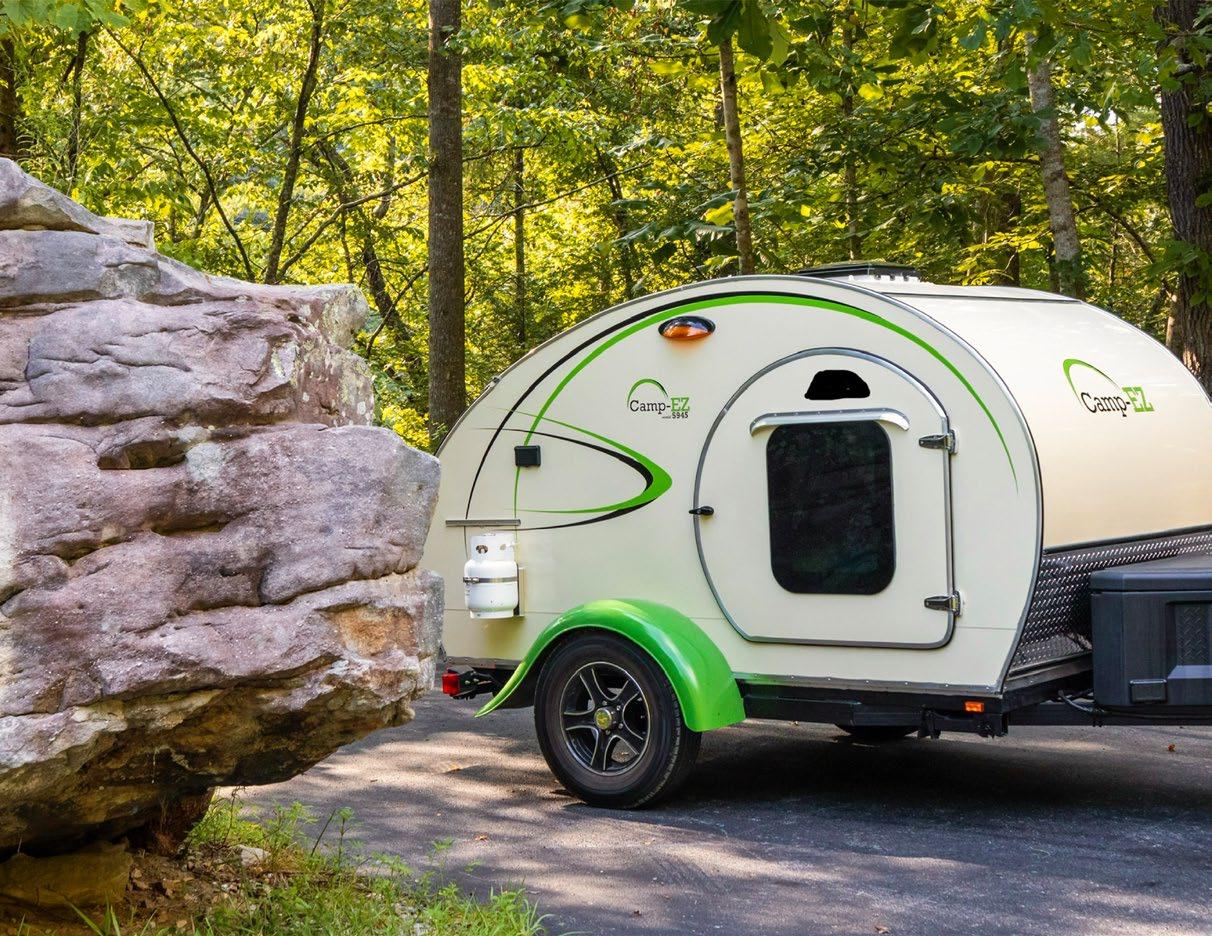
30 Cool Tears Magazine March/April 2023
Top: by Michael Foster, Obed National Wild and Scenic River, Tennessee
Middle: by Matt DeWitt, Prewitt Reservoir State Wildlife Area, Colorado
Bottom: by Wade Atteberry, Black Rock Reservoir, California



31 Cool Tears Magazine March/April 2023
Top: by John Chico, Yosemite National Park, California
Middle: by Sam Van Fleet, Mount St Helens National Monument, Washington
Bottom: by Adam Cowie
Top: Mary Mullaney, Jed Smith Wilderness, Wyoming
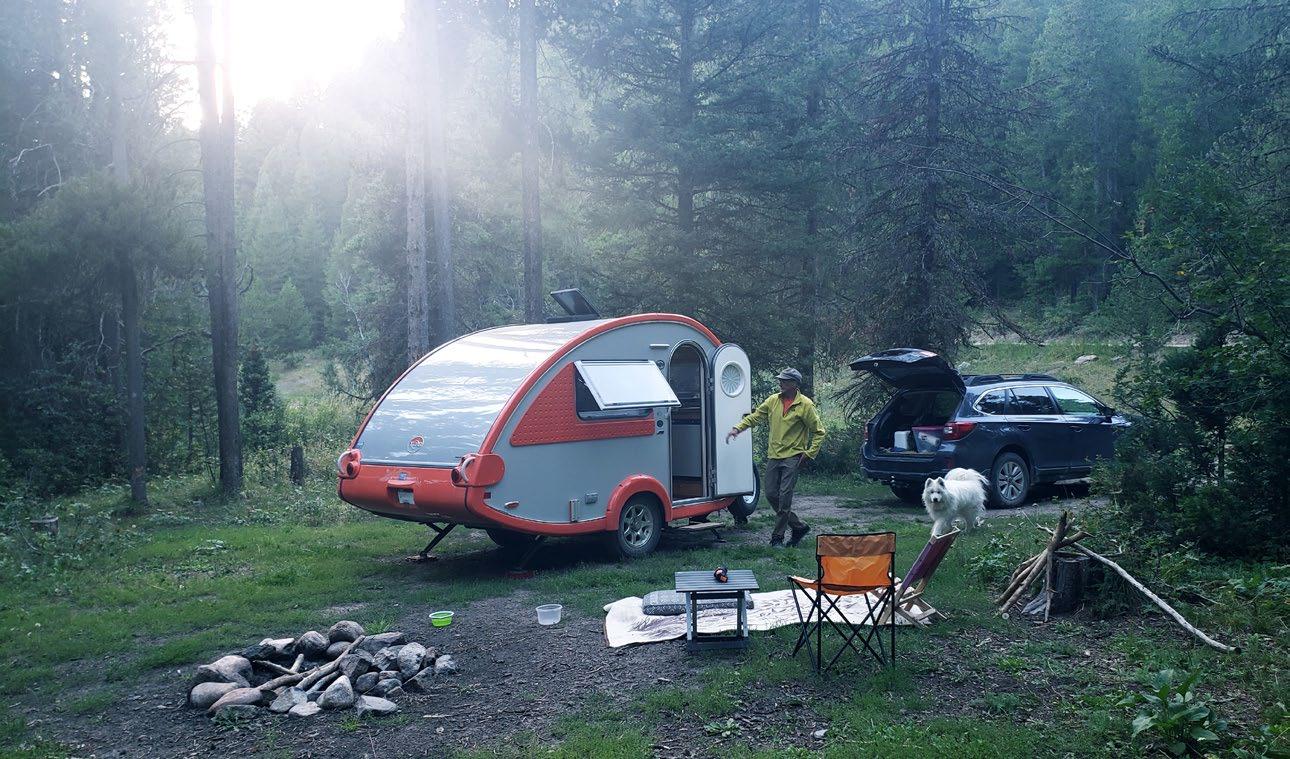
Middle: by Jay Capers, Mancos, Colorado

Bottom: by Chris Moody, Cambridgeshire, UK
Opposite: by Lucy McNellis, William O'Brien State Park, Minnesota

32 Cool Tears Magazine March/April 2023


33 Cool Tears Magazine March/April 2023
LEAVE NO TRACE: Travel & Camp on Durable Surfaces
 By LISA ADAMS
By LISA ADAMS
The number of people camping increased significantly during the pandemic as many sought to escape the crowded cities or travel restrictions. Unfortunately, this surge in outdoor activity puts added pressure on the environment, which helps stress the importance of treating the environment responsibly.
34 Cool Tears Magazine March/April 2023
Leave No Trace is a set of seven principles that aims to promote responsible outdoor recreation and reduce the impact of human activities in nature. By following these principles, we can preserve the natural environment, promote sustainable tourism, and ensure the safety and comfort of our group.
We'll review the second principle and provide helpful tips on how to find a suitable camping location.
Principle 2: Travel and Camp on Durable Surfaces
Environmental Preservation
Traveling and camping on durable surfaces is an essential component of environmental preservation. If we venture off-trail or camp on non-durable surfaces, we can easily damage the surrounding vegetation, soil, and wildlife habitats. This damage can be especially severe in fragile ecosystems like alpine and desert environments. In contrast, by staying on durable surfaces such as established trails, campsites, and rock, we can help preserve the natural environment for future generations.
Sustainable Tourism
Many of us enjoy slow travel to immerse ourselves in the local culture. The second principle of Leave No Trace is also crucial for promoting sustainable tourism. By using existing trails, campsites, and other designated areas, we can help distribute the impact of tourism more evenly and prevent overcrowding in sensitive areas. In addition,
this principle helps protect the natural and cultural resources that attract visitors to the area and ensures that tourism remains a sustainable source of economic activity for local communities.
Recreational Safety
Finally, traveling and camping on durable surfaces is crucial for recreational safety. Established trails and campsites are often designed to minimize risks and ensure that we can enjoy the outdoors safely and comfortably. In contrast, venturing off-trail or camping on non-durable surfaces can increase the risk of accidents, injuries, and exposure to severe weather conditions. By following the second principle of Leave No Trace, we can ensure a safe and enjoyable outdoor experience.
How to Choose a Campsite
There are several factors to consider when choosing a campsite. The second principle, "Travel and camp on durable surfaces," is critical since we can get off the beaten path and travel where people with larger campers can't go. In addition, we can travel to more remote wilderness areas where the ecosystem is more vulnerable to damage.
What is a durable surface?
When camping in the wilderness, choosing a site on durable surfaces such as rock, gravel, dry grasses, or established sites is essential. These surfaces are less likely to be damaged or impacted by human activity and are better able to withstand the weight of camping
35 Cool Tears Magazine March/April 2023
gear and foot traffic. Durable surfaces also allow water to flow through them and not be trapped, reducing the likelihood of erosion and the formation of mud pits.
Camping on delicate surfaces like meadows, alpine tundra, or wetlands is not recommended since this can cause significant environmental damage. For example, camping in a meadow can damage the delicate plants growing there and disrupt the food chain for the wildlife that relies on them. Similarly, camping on alpine tundra or wetlands can have long-lasting impacts as these areas have low vegetation levels and slow recovery
rates from human disturbance. However, suppose you cannot camp on a durable rock, gravel, dry grass, or established area. In that case, change camping locations daily to lessen repetitive walking routes that can trample sensitive vegetation.


36 Cool Tears Magazine March/April 2023
Avoid Bodies of Water
Another aspect of the principle of camping on durable surfaces is avoiding camping near bodies of water. Not only can camping too close to a lake or stream impact water quality, but it can also disturb wildlife and disrupt the delicate balance of the aquatic ecosystem. Therefore, we should camp at least 200 feet away from lakes and streams to minimize our impact.
If you choose to camp in a dry riverbed because it's arid, non-vegetated, and has a durable surface, be aware of the weather in your immediate area and at least 100 miles (or more) upstream. If it rains upstream, a torrent of water could come down the riverbed even if it hasn't rained in your location.
Walking Paths
Ideally, we should camp in an established site to avoid disturbing the environment further. However, if there is no evidence of camping in your selected location, avoid repetitive traffic routes from your camper to your bathroom area. It's best to vary your walking routes to reduce the amount of trampling and compaction on any specific part of your campsite.
By following the principle of camping on durable surfaces, campers can ensure that their camping experiences are sustainable and that they leave a minimal impact on the environment. This helps preserve the natural beauty of the wilderness and ensure that future generations can enjoy the same

37 Cool Tears Magazine March/April 2023
experiences. As teardrop and squaredrop campers, we are responsible for following these principles and being good stewards of the environment to continue enjoying the outdoors.
Possible Negative Environmental Impacts
The negative environmental impacts of not following the second Leave No Trace principle can be far-reaching and long-lasting. For example, suppose campers choose to camp on delicate surfaces like meadows or alpine tundra. In that case, the vegetation can be severely damaged, reducing the food source for wildlife and altering the ecosystem's structure. This can lead to a decline in the area's diversity of plant and animal species, and it can take years for the ecosystem to recover.
When camping near bodies of water, campers can cause harm to aquatic ecosystems by contaminating the water with food waste, soap, or other household items. This impacts the water quality and harms the aquatic plants and animals that depend on the water for survival. In addition, camping too close to bodies of water disturbs the wildlife that lives near the water and disrupts the delicate balance of the aquatic ecosystem.
The increased use of campfires during camping trips can also harm the environment. The heat can damage the soil and surrounding vegetation, and the ash and coals can contaminate the soil and water. In addition, campfires can leave long-
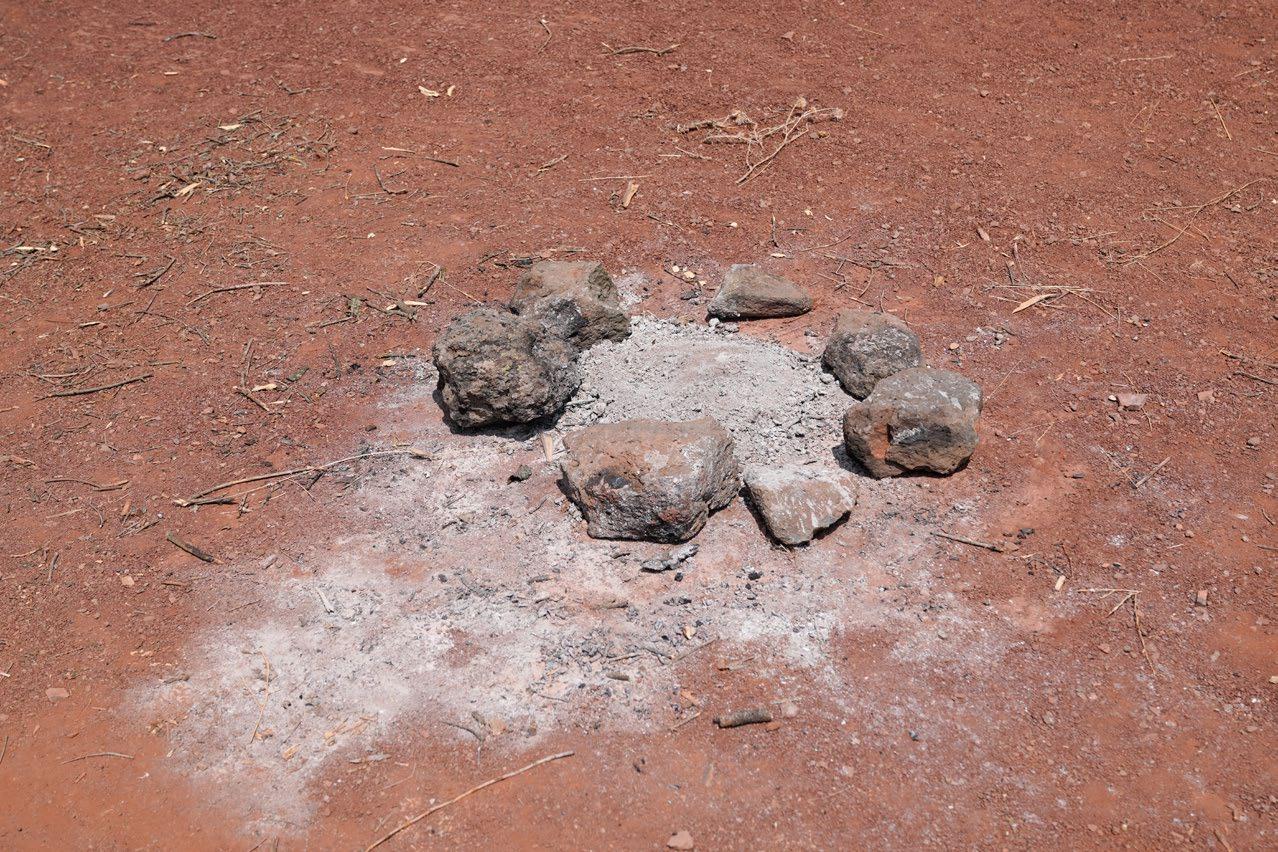
lasting scars on the landscape, altering the natural beauty of the wilderness.
Finally, trampling on vegetation, especially when setting up a camping site, can cause significant damage to the plants and reduce their ability to photosynthesize. This can alter the ecosystem's structure and reduce the wildlife's food source. Additionally, trampling on vegetation can cause erosion and contribute to the formation of mud pits, making it difficult for water to flow through the area.
Some National Park Service (NPS) sites have closed temporarily or have had specific areas closed due to overuse. This can occur when many visitors create new trails or campsites in previously undisturbed areas, causing damage to delicate ecosystems and altering the natural surroundings. This can happen innocently by cutting a corner while hiking a trail or walking around a fallen tree or mud puddle, causing more erosion.
For example, in recent years, some NPS sites, such as Yosemite National Park and Grand Canyon National Park, have had to close
38 Cool Tears Magazine March/April 2023
specific areas or trails due to overuse and damage caused by visitors. These closures aim to allow the damaged areas to recover and prevent further harm to the ecosystem.
In the last few years, several NPS sites have implemented strict regulations and permit processes to reduce the impact of visitors on the environment and help protect the natural surroundings. This includes limiting the number of visitors to a specific area and requiring campers to camp in designated campsites only.


Summary
The negative environmental impacts of not following the principle of traveling and camping on durable surfaces can be significant and long-lasting. Therefore, we must all minimize our ecological impact and follow this principle by camping on a durable surface, avoiding camping near
bodies of water, using established fire rings, and avoiding trampling on vegetation. By doing so, we can help to preserve the natural surroundings for future generations and ensure that the wilderness remains a beautiful and diverse place for all to enjoy. g
39 Cool Tears Magazine March/April 2023







40 Cool Tears Magazine March/April 2023 www.timberleaftrailers.com Uncompromising quality. CLASSIC TEARDROP STYLE, MODERN AMENITIES QUALITY DESIGN & CRAFTSMANSHIP KESTREL STARTS AT $8,500 PIKA STARTS AT $14,500 CLASSIC STARTS AT $23,400 #cooltearsmag https://www.facebook.com/CoolTearsMagazine/ @cooltearsmag Tag your ‘grams with #cooltearsmag for a chance to be featured on our Instagram feed and in the magazine. Time for a new adventure. Videos of our adventures, reader builds, tips and tricks. Live tiny - Live free. Cool Tears wants to hear from YOU! Send us your story and if we use it, we'll give you $50! Anne@cooltears.com







































 By COOL TEARS STAFF
By COOL TEARS STAFF



























































 By COOL TEARS STAFF
By COOL TEARS STAFF














 By LISA ADAMS
By LISA ADAMS












